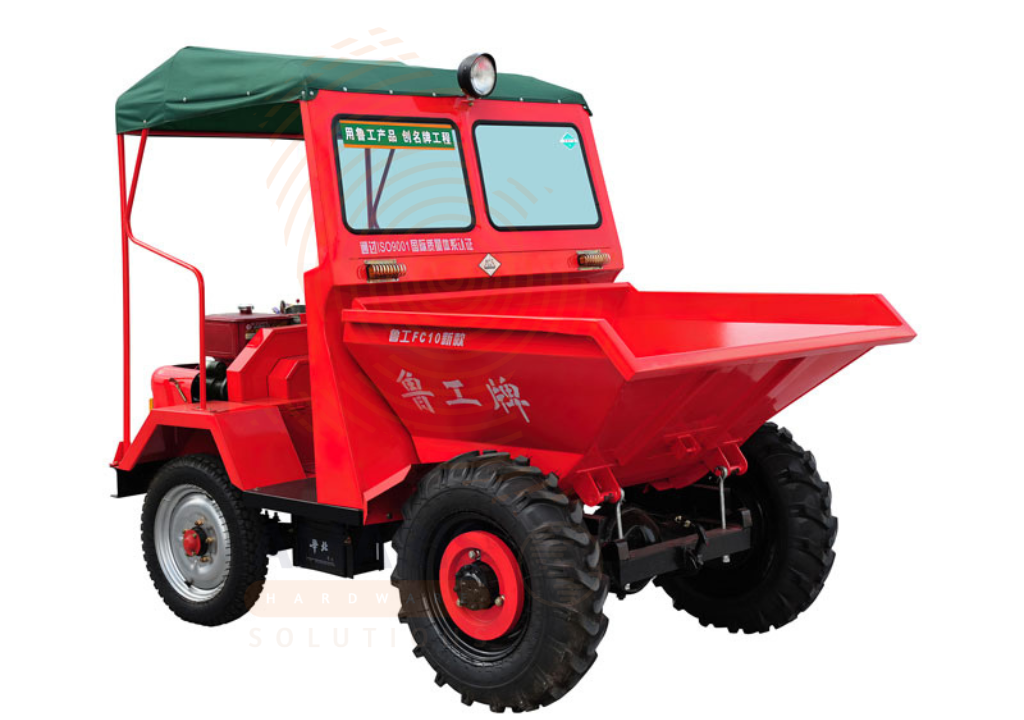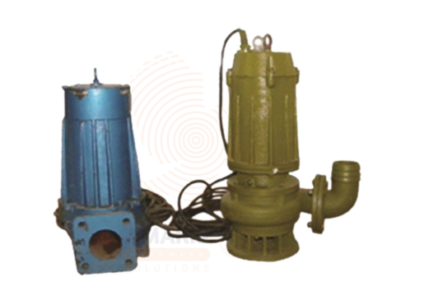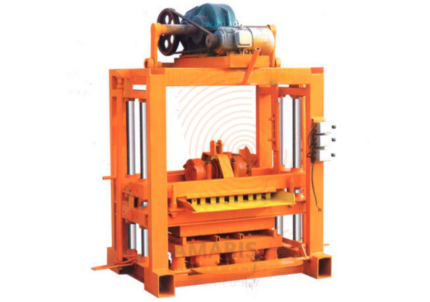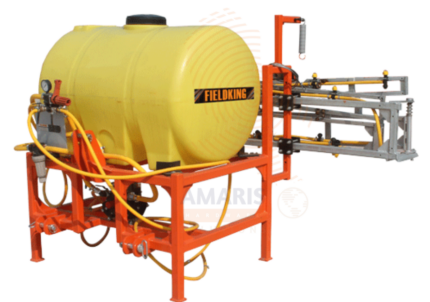Side Dumper
WhatsApp Order
A side dumper is a heavy-duty trailer or hauling unit designed to unload materials by tipping its container to the side rather than the rear. Commonly used in construction, mining, agriculture, and waste management, the side dumper is engineered for fast, stable unloading of bulk materials such as soil, gravel, sand, rocks, and agricultural produce. Its side-tipping mechanism minimizes the risk of tipping over compared to rear dumpers, especially on uneven terrain. Side dumpers increase productivity by enabling quick unloading and reducing turnaround times in high-volume material handling operations.
Description
Table of Contents
ToggleSide Dumper
Uses
-
Construction Material Transport
o Transports and unloads gravel, sand, dirt, and other aggregates on-site.
o Ideal for roadwork, excavation, and foundation projects. -
Mining Operations
o Moves rocks, ore, and tailings efficiently in mining environments.
o Handles high-load volumes under harsh conditions. -
Agricultural Bulk Handling
o Carries grain, silage, manure, or feed between fields or storage areas.
o Reduces labor and time in large-scale farm operations. -
Landscaping Projects
o Delivers topsoil, mulch, stones, or compost to landscaping sites.
o Facilitates clean, controlled unloading in tight spaces. -
Road Construction
o Supplies base and fill materials quickly during road building.
o Unloads to the side, enabling better traffic flow management. -
Waste Management
o Transports construction and demolition waste, or solid waste to landfills.
o Used in large cleanup and waste transfer operations. -
Flood Control and Erosion Projects
o Delivers sandbags, soil, and riprap for reinforcing embankments.
o Aids in emergency response logistics. -
Infrastructure Development
o Used in dam, railway, or airport projects to deliver and place bulk materials.
o Ensures fast material turnover on large-scale sites. -
Snow Removal and Salt Distribution
o Carries and dumps snow or road salt along roads during winter.
o Supports municipal maintenance and emergency operations.
SAFETY HANDLING PRECAUTIONS
Safety Precautions
-
Wear Protective Equipment
o Use hard hats, gloves, steel-toed boots, and visibility vests when operating. -
Inspect Before Use
o Check hydraulic systems, tires, and latches for damage or leaks. -
Ensure Stable Grounding
o Only unload on level, firm ground to prevent tipping or shifting. -
Clear the Unloading Area
o Keep personnel and equipment away from the dumping side. -
Follow Load Limits
o Do not exceed the trailer’s weight or volume capacity. -
Secure the Load Properly
o Ensure even distribution and secure the load to prevent shifting during transport. -
Operate Slowly During Dumping
o Use slow, controlled movements to avoid sudden tipping or equipment damage. -
Avoid Overhead Hazards
o Be aware of power lines, structures, or trees in the dumping zone. -
Perform Regular Maintenance
o Lubricate joints, check hydraulic fluid, and monitor structural integrity.
Related products
Block Making Machine
A Block Making Machine is a specialized construction equipment designed to produce high-quality concrete blocks, bricks, and pavers used in building and infrastructure projects. It automates the process of mixing, molding, compacting, and curing concrete materials into consistent, uniform blocks of various sizes and shapes. These machines can be manual, semi-automatic, or fully automatic, depending on their level of automation and production capacity. They are widely used in commercial, industrial, and residential construction projects for producing large volumes of concrete masonry units efficiently.
Boom Sprayer
A Boom Sprayer is an agricultural implement designed to apply liquids such as herbicides, pesticides, fertilizers, and water evenly over large crop areas. It features a horizontal boom equipped with multiple nozzles spaced at intervals, allowing for wide coverage and uniform spray distribution. Boom sprayers can be mounted on tractors, pulled behind as trailers, or be self-propelled units. They enhance the efficiency and accuracy of spraying operations in farming, reducing manual labor and ensuring effective crop protection and nutrition.
Floor Jack
PRODUCT DESCRIPTION
A floor jack is a mechanical device used to lift heavy vehicles, such as cars or trucks, off the ground to facilitate maintenance or repairs. It typically consists of a horizontal hydraulic cylinder, a handle for pumping, and a lifting pad that comes into contact with the vehicle's underside. By pumping the handle, hydraulic pressure is generated, causing the lifting pad to rise and lift the vehicle, providing a convenient and efficient way to access the undercarriage for various automotive tasks. Floor jacks are commonly found in automotive repair shops, garages, and for personal use by car enthusiasts.
Fork lift
A Fork lift is a powered industrial truck used to lift, carry, and transport heavy materials over short distances, commonly used in warehouses, construction sites, manufacturing facilities, and loading docks. Equipped with two forks or prongs at the front, forklifts are designed to insert under pallets or heavy items and lift them using a hydraulic system. They come in various types, including counterbalance forklifts, reach trucks, pallet jacks, and rough terrain forklifts, each tailored to specific environments and tasks. Forklifts are essential for efficient material handling, reducing manual labor, improving safety, and streamlining operations in logistics and industrial settings.
Low Profile Floor Jack
A low-profile floor jack is a type of hydraulic jack designed specifically for vehicles with low ground clearance, such as sports cars or lowered vehicles. It is characterized by its compact and sleek design, allowing it to fit easily under vehicles with minimal ground-to-frame clearance. The low-profile nature of these jacks enables users to access and lift vehicles that may be challenging or impossible to reach with standard floor jacks. These jacks typically have a lower minimum height and a shorter body compared to regular floor jacks, making them suitable for lifting vehicles with limited space between the ground and the vehicle's frame.
Tractor
A tractor is a powerful motorized vehicle designed primarily for pulling or pushing agricultural machinery or trailers. It is a cornerstone of modern farming and land management, offering versatile performance in plowing, tilling, planting, harvesting, and hauling operations. Tractors are equipped with high-torque engines, large rear wheels or tracks, and a variety of attachment points, allowing them to operate over rough terrain and handle a wide range of tasks. They are also used in construction, landscaping, and material transport due to their durability and adaptability.
Vibrating Screen
A Vibrating Screen is an industrial screening machine used to separate materials by size through vibration. It consists of a mesh screen that oscillates to facilitate the sorting and classification of granular or particulate materials such as sand, gravel, minerals, coal, and aggregates. The vibration helps move materials across the screen while finer particles pass through the mesh openings, and larger materials continue over for further processing or disposal. Vibrating screens are vital in mining, construction, recycling, and material processing industries, enhancing efficiency by sorting materials quickly and accurately. They come in various configurations, including circular, linear, and elliptical motion screens, designed to meet specific application needs.
Wheel Loader
A Wheel Loader is a heavy-duty construction machine designed for loading, transporting, and moving bulk materials such as soil, gravel, sand, and debris. It features a large front-mounted bucket attached to hydraulic arms that allow for lifting, carrying, and dumping materials efficiently. Wheel loaders vary in size from compact models suitable for tight spaces to large machines designed for heavy-duty operations. Their excellent maneuverability, high lifting capacity, and versatility with various attachments such as forks, grapples, and snow plows make them indispensable in construction, mining, agriculture, and waste management industries. These machines help increase productivity by speeding up material handling and site preparation tasks.


 Acrylic Sealants
Acrylic Sealants Construction Adhesives
Construction Adhesives Double-Sided Tape
Double-Sided Tape Duct Tape
Duct Tape Electrical Tape
Electrical Tape Epoxy & Resins
Epoxy & Resins Masking Tape
Masking Tape
 Automotive Wrenches & Socket Sets
Automotive Wrenches & Socket Sets Battery Chargers & Jump Starters
Battery Chargers & Jump Starters Car Jacks & Stands
Car Jacks & Stands Car Wash & Detailing Products
Car Wash & Detailing Products Diagnostic Tools
Diagnostic Tools Tire Inflators
Tire Inflators Vehicle Lighting
Vehicle Lighting Oil & Lubricants
Oil & Lubricants
 Adhesives & Sealants
Adhesives & Sealants Bricks & Blocks
Bricks & Blocks Cement & Concrete
Cement & Concrete Drywall & Plaster
Drywall & Plaster Flooring (Tiles, Wood, Laminate)
Flooring (Tiles, Wood, Laminate) Lumber & Plywood
Lumber & Plywood Paints, Primers & Coatings
Paints, Primers & Coatings Insulation Materials
Insulation Materials Roofing Materials
Roofing Materials
 Circuit Breakers
Circuit Breakers Electrical Cables & Wires
Electrical Cables & Wires Switches & Sockets
Switches & Sockets Fuses & Relays
Fuses & Relays Connectors & Terminals
Connectors & Terminals Electrical Boxes & Panels
Electrical Boxes & Panels Conduit & Fittings
Conduit & Fittings Lighting Fixtures & Bulbs
Lighting Fixtures & Bulbs Extension Cords & Power Strips
Extension Cords & Power Strips
 Anchors
Anchors Bolts
Bolts Clips & Clamps
Clips & Clamps Screws
Screws Nuts
Nuts Washers
Washers Rivets
Rivets Nails
Nails Threaded Rods
Threaded Rods
 Hammers
Hammers Measuring Tools (Tapes, Levels, Calipers)
Measuring Tools (Tapes, Levels, Calipers) Screwdrivers
Screwdrivers Pliers & Cutters
Pliers & Cutters Saws & Blades
Saws & Blades Chisels & Punches
Chisels & Punches Allen Keys & Hex Keys
Allen Keys & Hex Keys Ratchets & Socket Sets
Ratchets & Socket Sets Wrenches & Spanners
Wrenches & Spanners
 Power Tool Accessories (Blades, Bits, Discs)
Power Tool Accessories (Blades, Bits, Discs) Rotary Tools
Rotary Tools Saws (Circular, Jigsaw, Reciprocating)
Saws (Circular, Jigsaw, Reciprocating) Drills & Drivers
Drills & Drivers Grinders & Sanders
Grinders & Sanders Heat Guns
Heat Guns Nail Guns
Nail Guns Impact Wrenches
Impact Wrenches Batteries & Chargers
Batteries & Chargers
 Pipes & Fittings (PVC, Copper, PEX)
Pipes & Fittings (PVC, Copper, PEX) Plumbing Tools
Plumbing Tools Pumps & Motors
Pumps & Motors Sealants & Adhesives for Plumbing
Sealants & Adhesives for Plumbing Valves & Taps
Valves & Taps Water Heaters
Water Heaters Drainage Systems
Drainage Systems Faucets & Fixtures
Faucets & Fixtures Hoses & Tubing
Hoses & Tubing
 Hinges & Latches
Hinges & Latches Hooks & Brackets
Hooks & Brackets Window Hardware
Window Hardware Chains & Cables
Chains & Cables Casters & Wheels
Casters & Wheels Shelving & Storage Systems
Shelving & Storage Systems Door Handles & Locks
Door Handles & Locks Drawer Slides & Cabinet Hardware
Drawer Slides & Cabinet Hardware
 Personal Protective Equipment (PPE)
Personal Protective Equipment (PPE) Respirators & Masks
Respirators & Masks Safety Glasses
Safety Glasses Safes
Safes Security Cameras
Security Cameras Gloves
Gloves Helmets
Helmets Ear Protection
Ear Protection Fire Safety Equipment
Fire Safety Equipment Locks & Padlocks
Locks & Padlocks Motion Sensors & Alarms
Motion Sensors & Alarms
 Garden Fencing
Garden Fencing Garden Furniture Hardware
Garden Furniture Hardware Lawn Mowers
Lawn Mowers Trimmers & Edgers
Trimmers & Edgers Shovels & Spades
Shovels & Spades Rakes & Hoes
Rakes & Hoes Pruning Shears & Loppers
Pruning Shears & Loppers Watering Systems (Hoses, Sprinklers, Nozzles)
Watering Systems (Hoses, Sprinklers, Nozzles)
 Interior Paints
Interior Paints Paint Brushes & Rollers
Paint Brushes & Rollers Paint Strippers & Thinners
Paint Strippers & Thinners Paint Trays & Accessories
Paint Trays & Accessories Exterior Paints
Exterior Paints Spray Paints
Spray Paints Primers & Undercoats
Primers & Undercoats Varnishes & Stains
Varnishes & Stains
 Gaskets & Seals
Gaskets & Seals Hydraulic Fittings
Hydraulic Fittings Industrial Fasteners
Industrial Fasteners Industrial Hoses
Industrial Hoses Lubricants & Greases
Lubricants & Greases Metal Sheets & Bars
Metal Sheets & Bars Bearings & Bushings
Bearings & Bushings Belts & Pulleys
Belts & Pulleys
 HVAC Filters
HVAC Filters Insulation for HVAC
Insulation for HVAC Air Conditioners
Air Conditioners Refrigerants
Refrigerants Ventilation Ducts & Fittings
Ventilation Ducts & Fittings Thermostats & Controllers
Thermostats & Controllers Fans & Blowers
Fans & Blowers
 Pegboards & Hooks
Pegboards & Hooks Shelving Units
Shelving Units Storage Bins & Containers
Storage Bins & Containers Toolboxes & Tool Chests
Toolboxes & Tool Chests Workbenches
Workbenches Drawer Organizers
Drawer Organizers Labeling Supplies
Labeling Supplies
 Welding Accessories (Clamps, Brushes)
Welding Accessories (Clamps, Brushes) Welding Electrodes & Rods
Welding Electrodes & Rods Welding Helmets & Gloves
Welding Helmets & Gloves Welding Machines
Welding Machines Soldering Irons & Stations
Soldering Irons & Stations Flux & Solder Wire
Flux & Solder Wire
 Generator Accessories
Generator Accessories Inverters
Inverters Portable Generators
Portable Generators Power Inverters
Power Inverters Transfer Switches
Transfer Switches Diesel & Gasoline Generators
Diesel & Gasoline Generators
 Transport Equipment: Carts, Dollies, and Hand Trucks
Transport Equipment: Carts, Dollies, and Hand Trucks Storage Solutions: Pallets, Racks, and Containers
Storage Solutions: Pallets, Racks, and Containers Lifting Equipment: Hoists, Cranes, and Jacks
Lifting Equipment: Hoists, Cranes, and Jacks Conveyors and Accessories: Belts and Rollers
Conveyors and Accessories: Belts and Rollers










